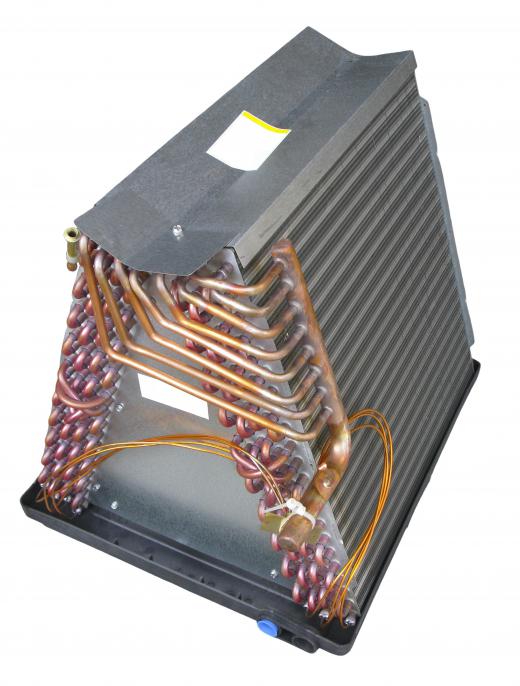An adsorption or absorption chiller is a cooling system that uses heat instead of electricity to cool something. There are many industrial uses for absorption chillers, including manufacturing plant cooling and wasted heat utilization. The different types of absorption chillers are solar, water, gas, and bromide with steam.
The process to cool a building with an absorption chiller is similar to that used by conventional air conditioning systems in that there is compressor, condenser, and evaporator equipment within the system. Refrigerant, normally Freon®, is subjected to pressure and builds up heat in the compressor. As the pressure and heat build, the liquid is converted to a vapor gas. The gas then moves to the condenser where the heat dissipates and it is turned back into a liquid.

The cooled liquid is directed into the evaporator, where it turns into a gas and pulls heat from the air; fan blowers send the cool air into the building. The gas moves from the evaporator into the compressor and the process starts again. In traditional air conditioning systems, this process is achieved with the use of an electric powered pump.
In a solar absorption chiller, solar panels are placed on a building's roof to collect heat from the sun. The stored heat is then used to heat the liquid in the air conditioning system. As the liquid heats, it turns to vapor and flows through the system in the same manner as conventional systems. The main difference is that instead of using an electric pump, the liquid is heated by the sun.

In a gas absorption chiller, the pump is run by a natural gas line attached to the system. When the system is powered on, the natural gas activates the pump to flow refrigerant through the compressor. These systems run more efficiently than electric air conditioning systems but are still more costly to operate than solar varieties. In areas where sunlight is not available for extended periods of time, a gas absorption chiller is more often used.
In a bromide with steam absorption chiller, the refrigerant is water instead of Freon®. The system also contains a salt substance, usually in the form of lithium bromide. Heat from a generator pump causes the water to separate from the lithium bromide and turn to steam. As the steam rises into the absorber and cools, it remixes with the lithium bromide and becomes significantly colder. This is due to the extreme atmospheric pressure within the absorber.
Under normal conditions, water vaporizes at 212° F (100° C), but within the absorber, water can vaporize as low as 46° F (8° C). This low temperature allows the water to cool quickly as it moves out of the absorber. The chilled water then moves through the evaporator, where blowers cool the air flowing over the evaporator coils containing the chilled water and out into the building.
